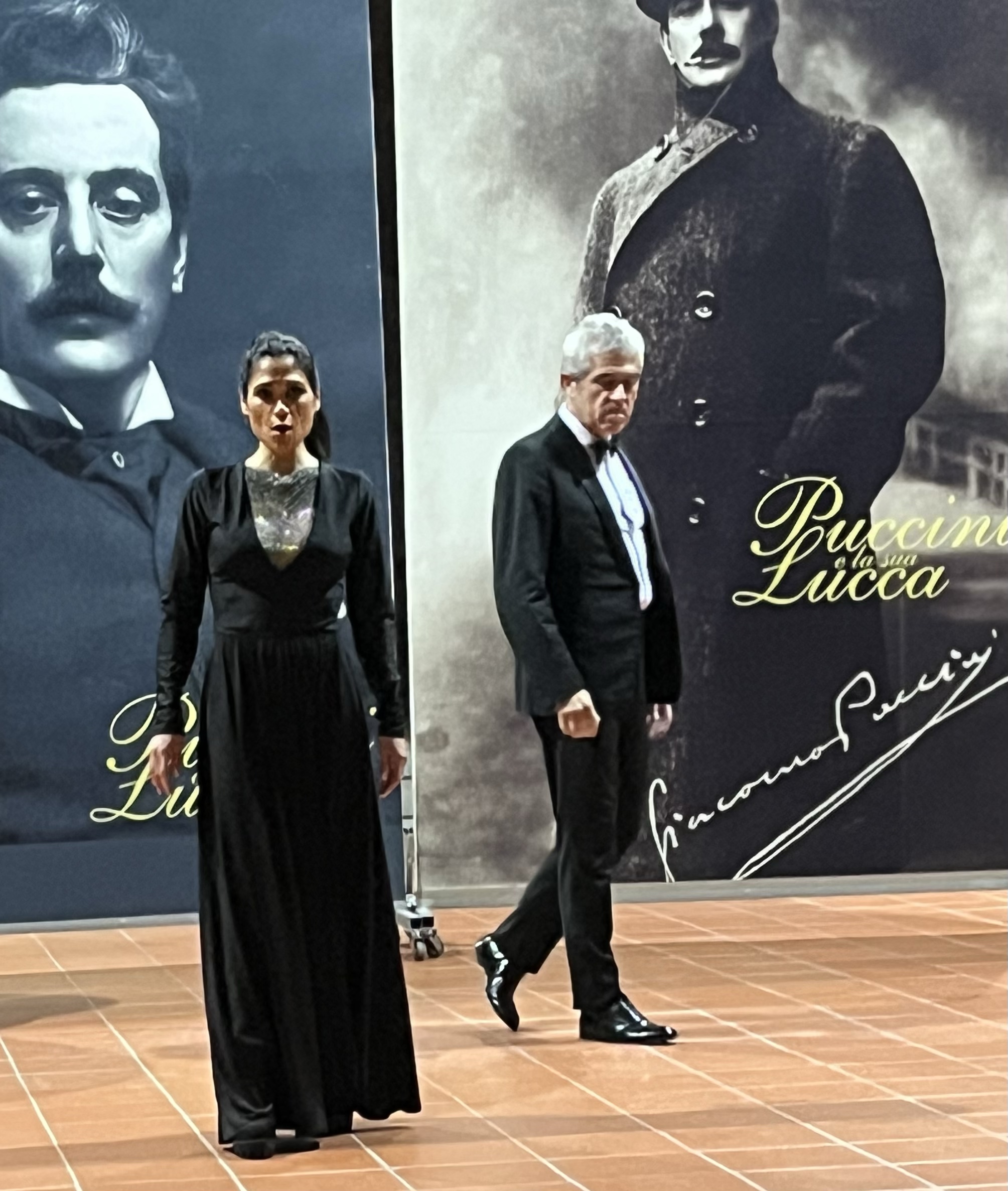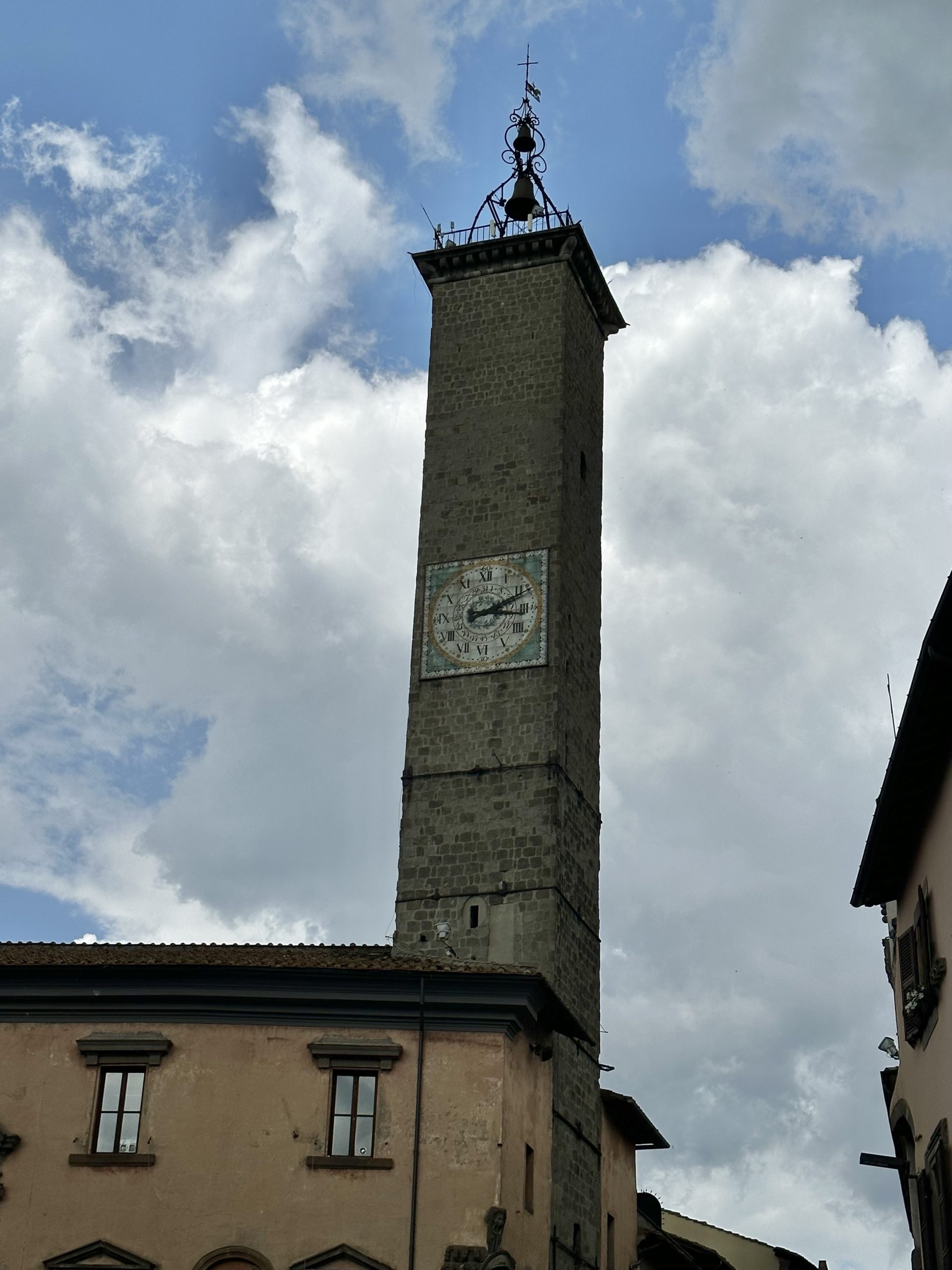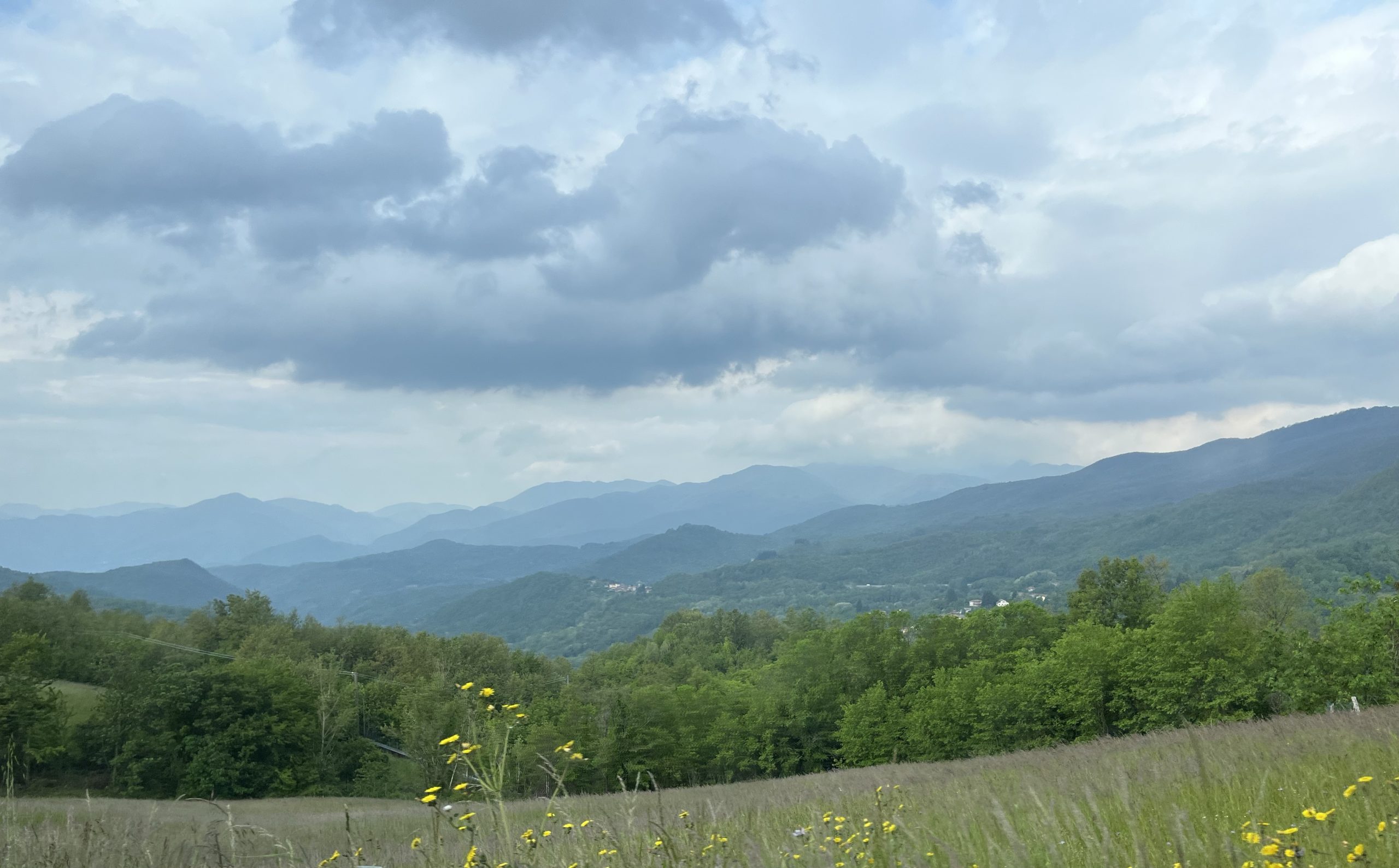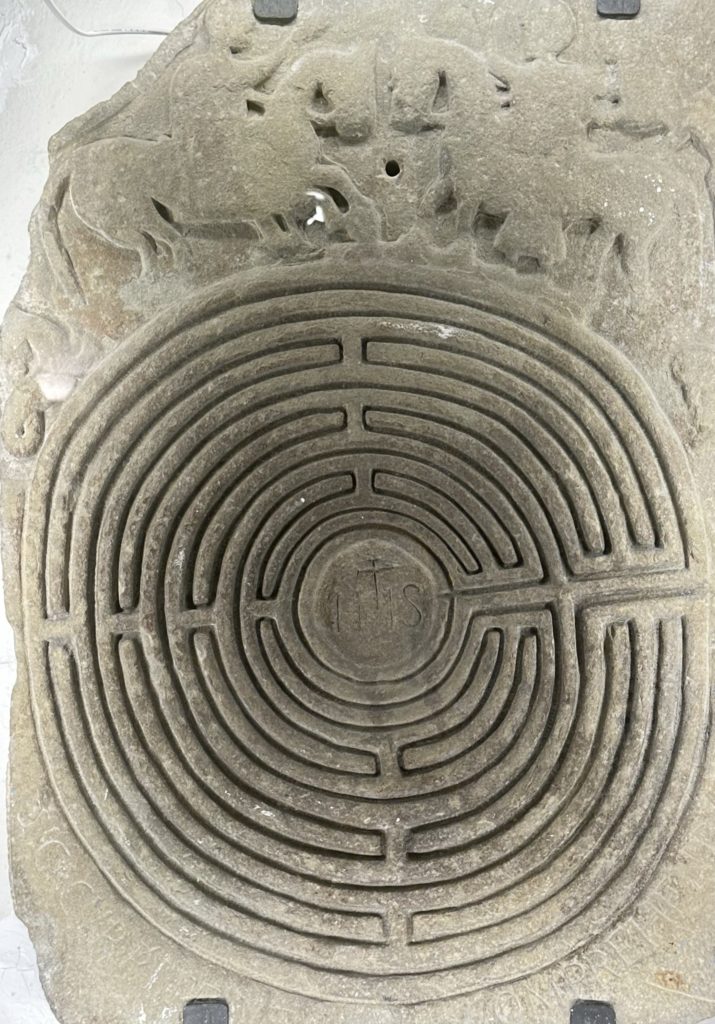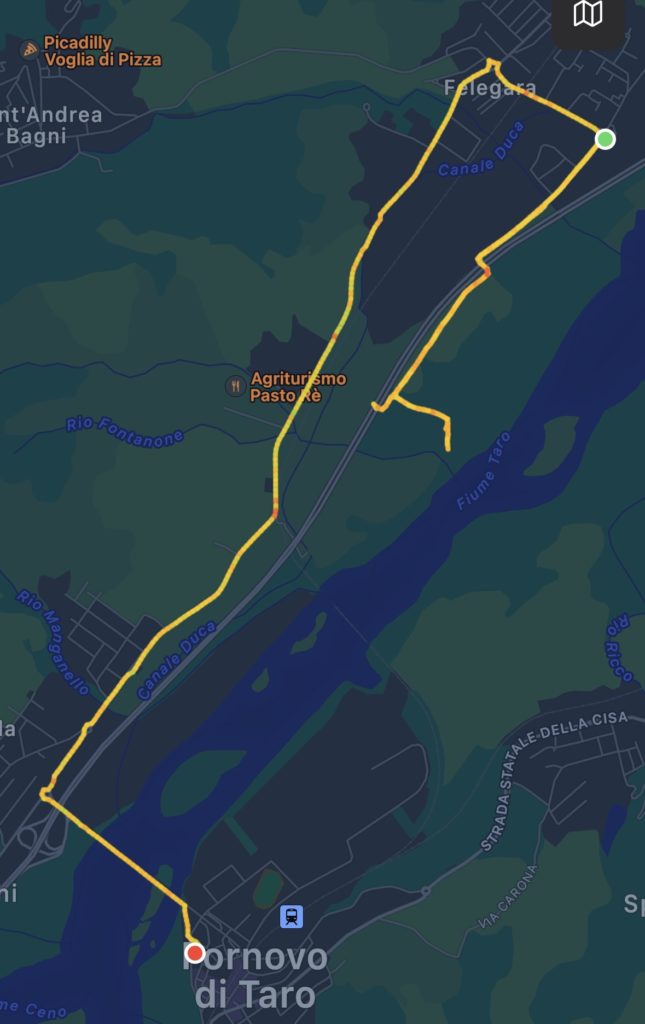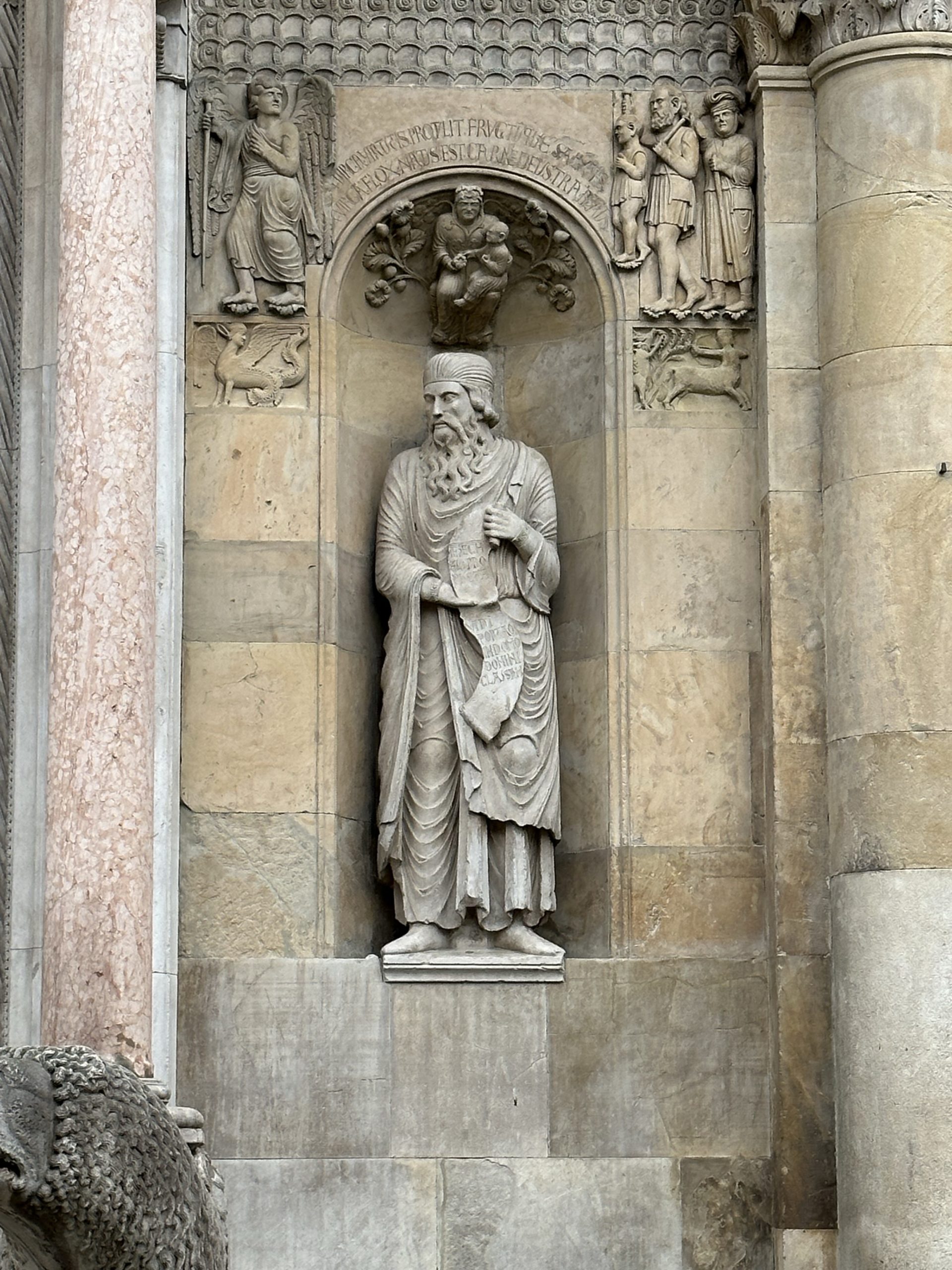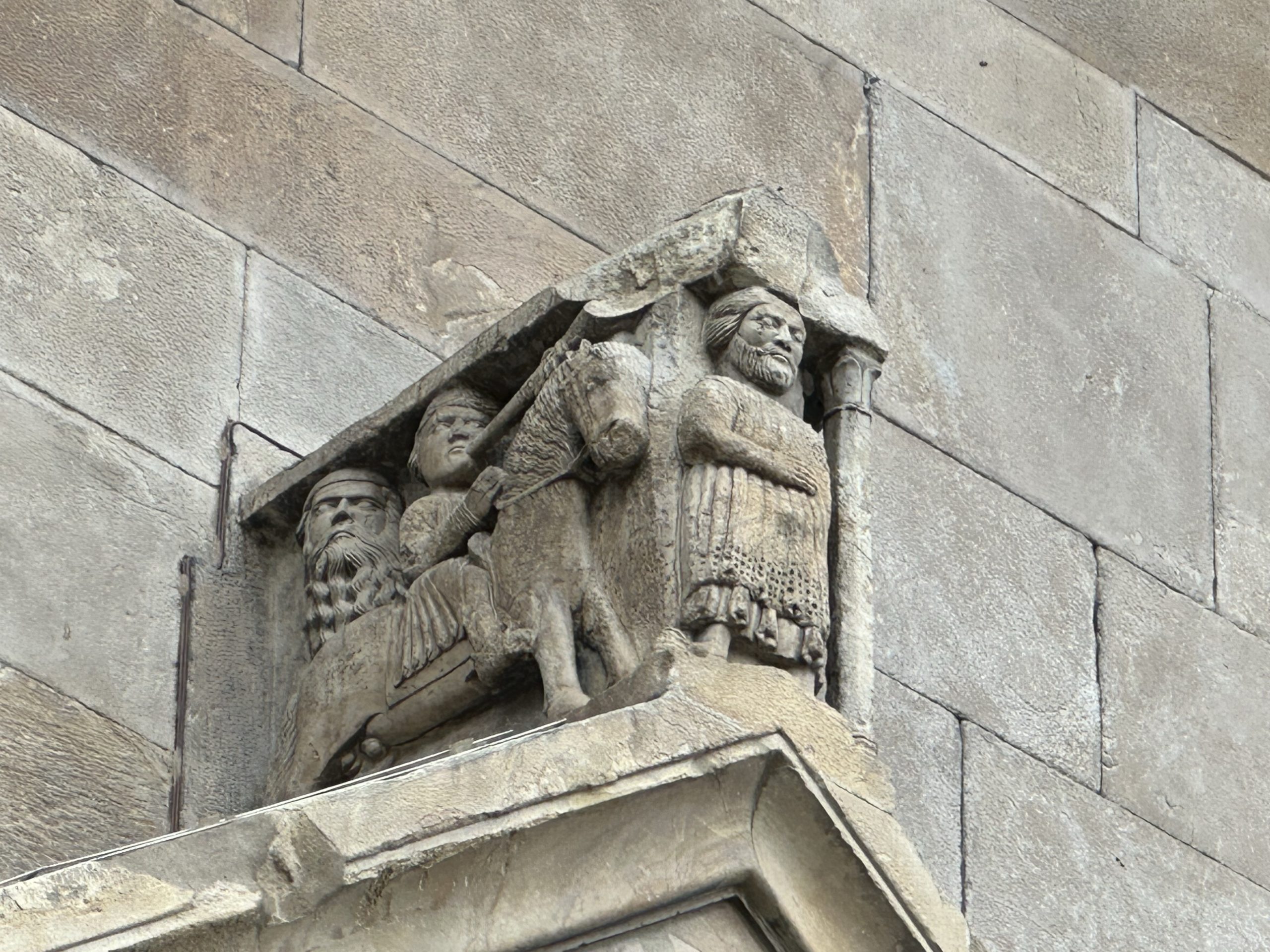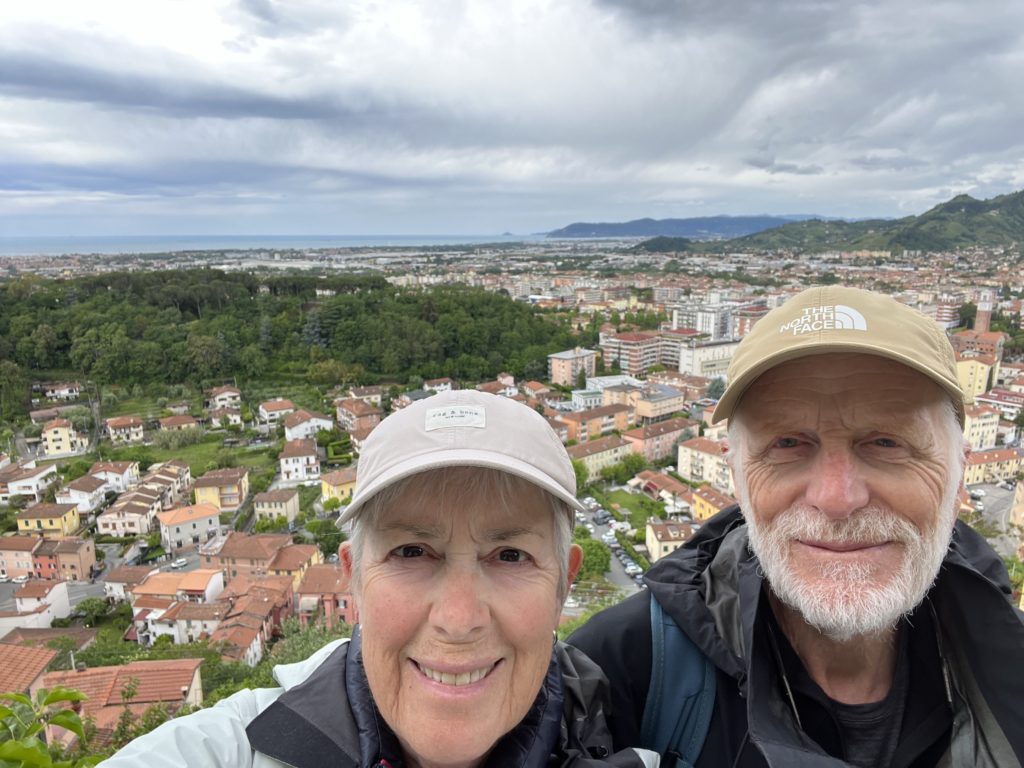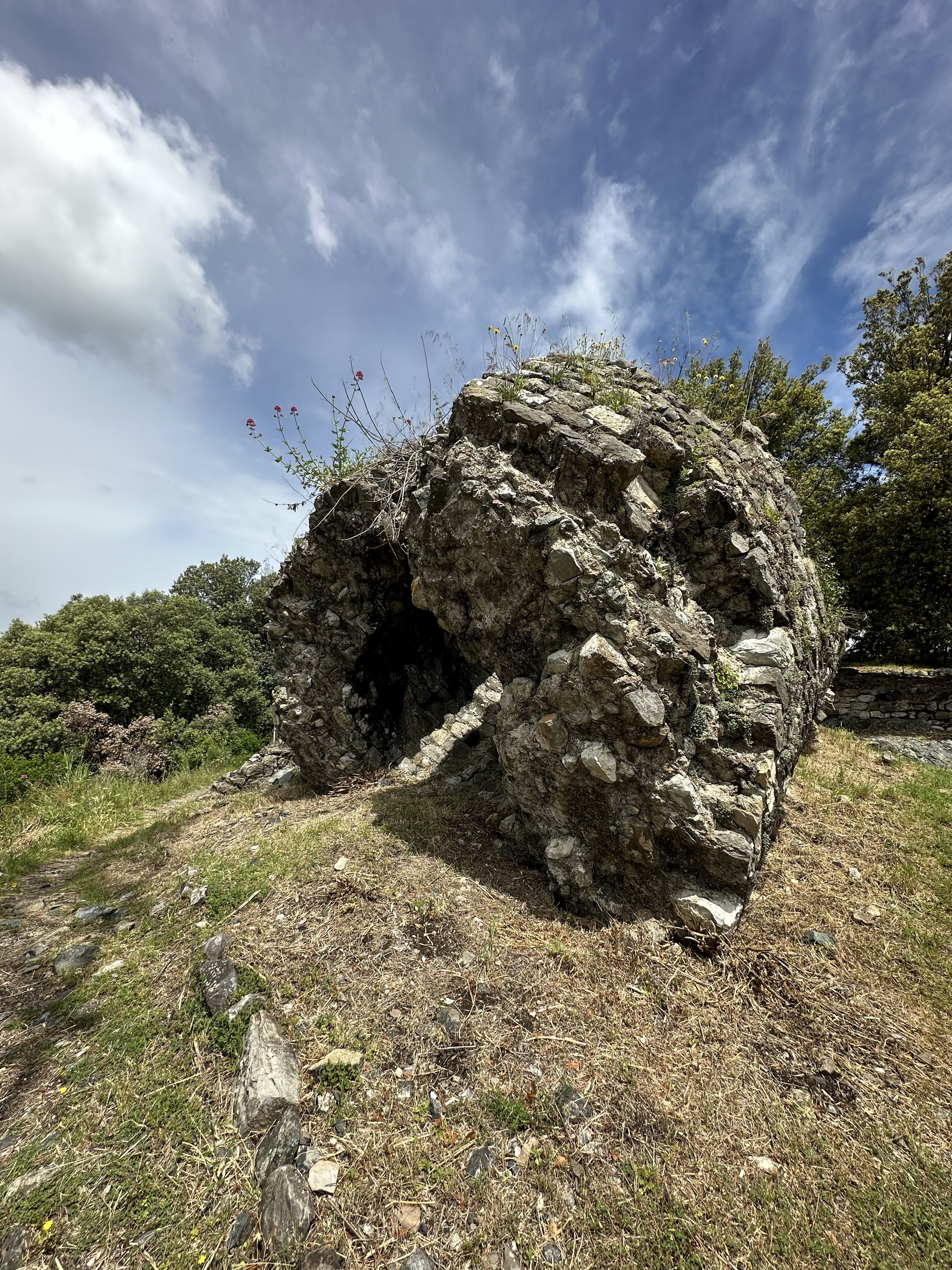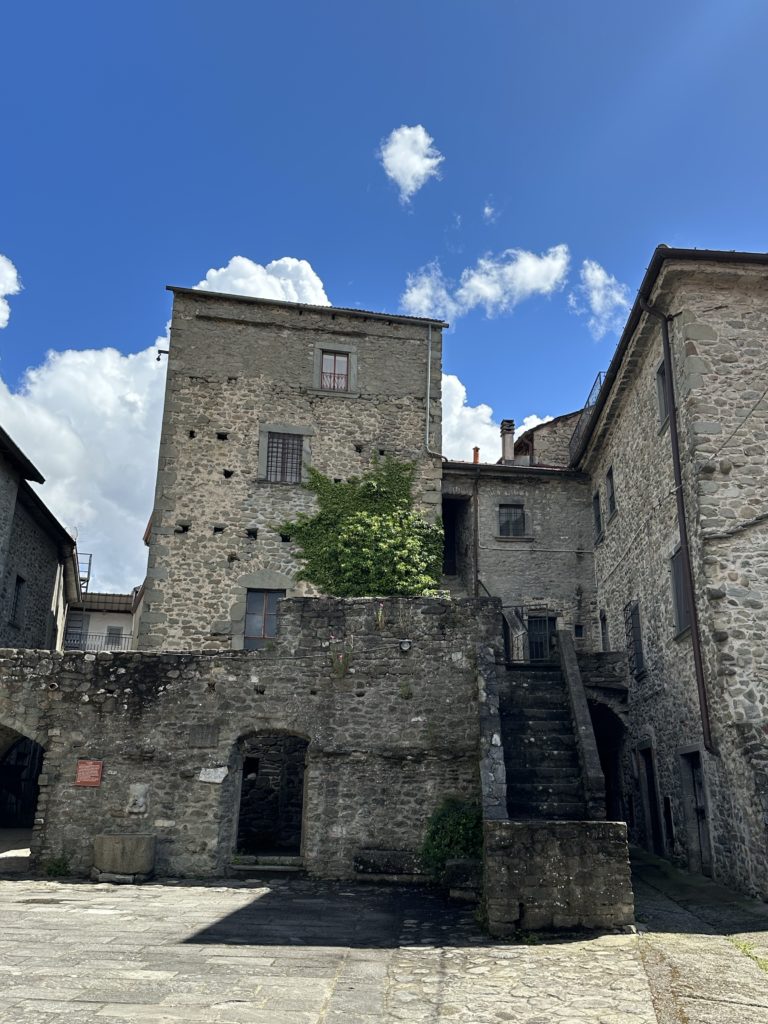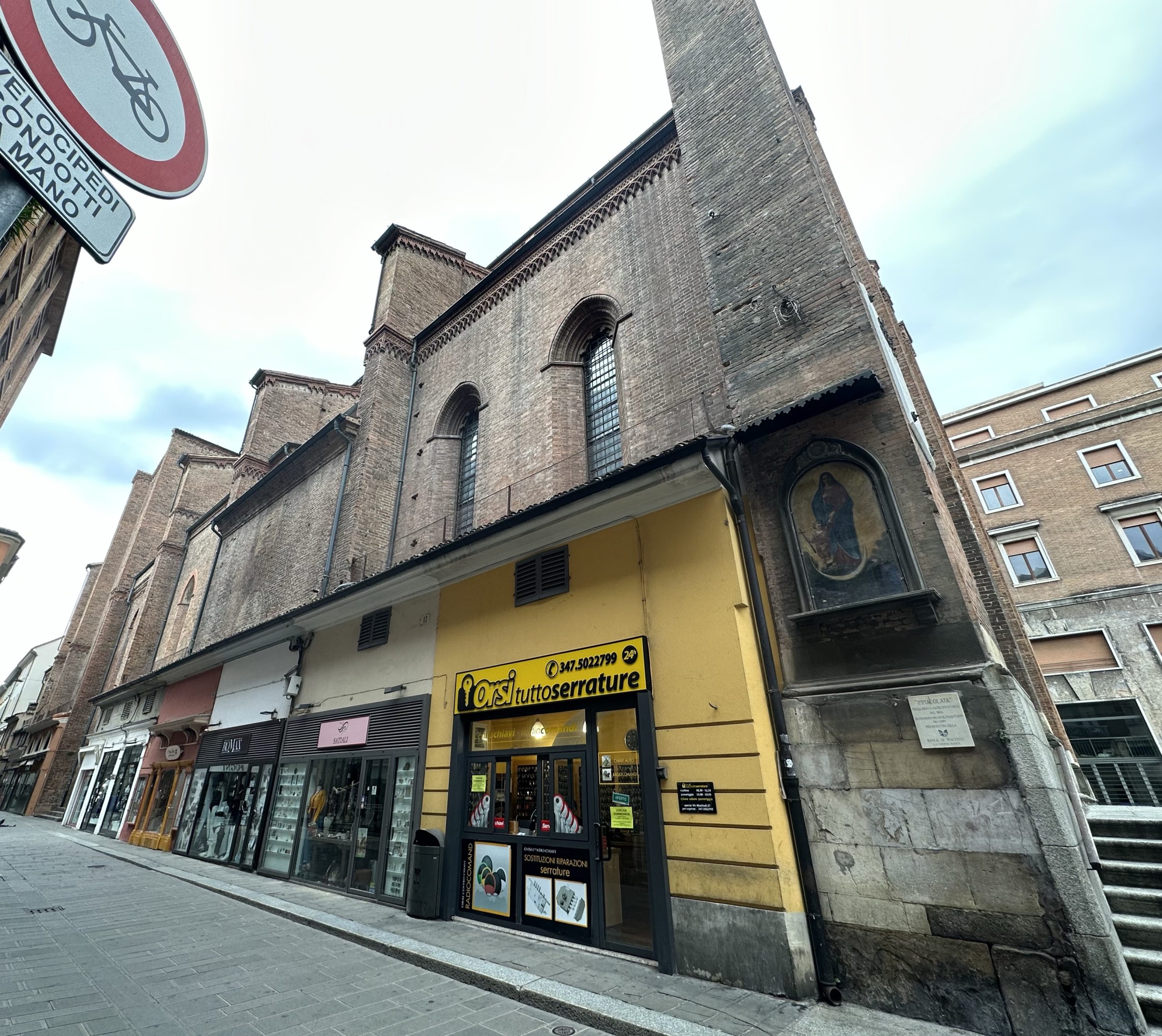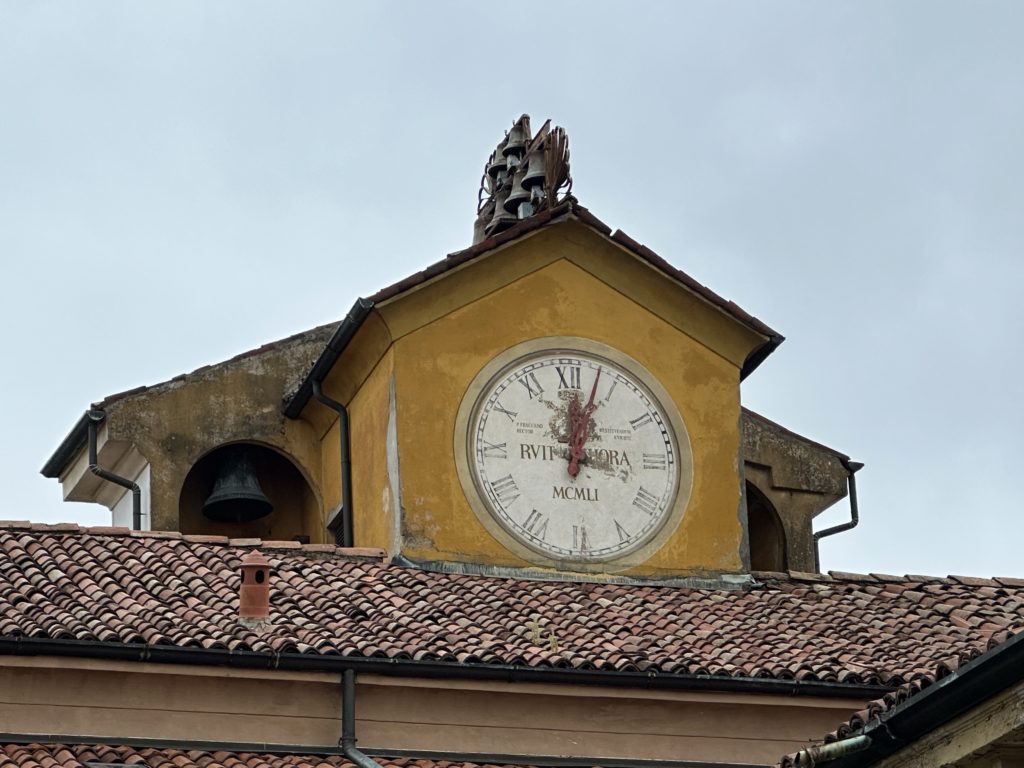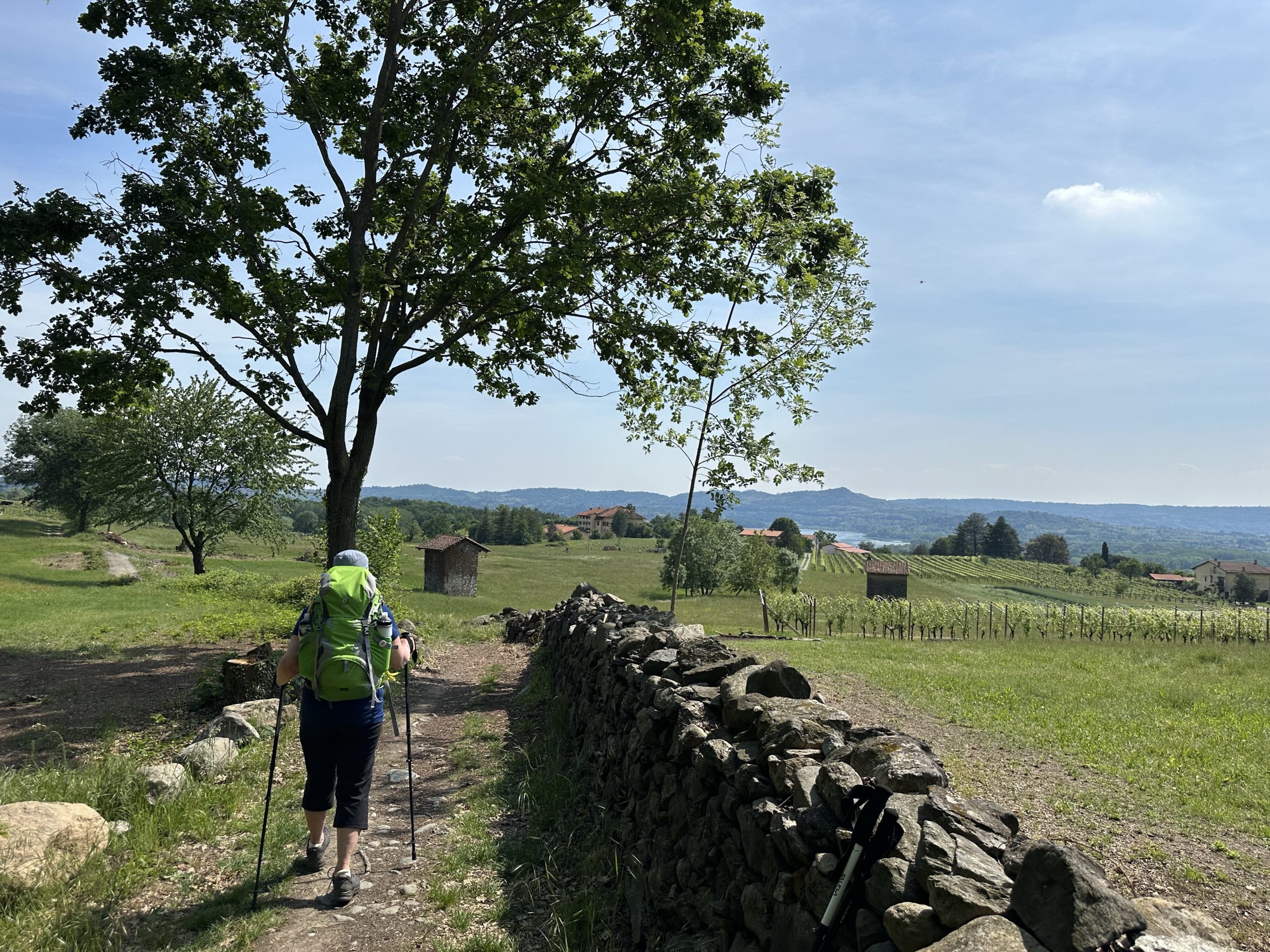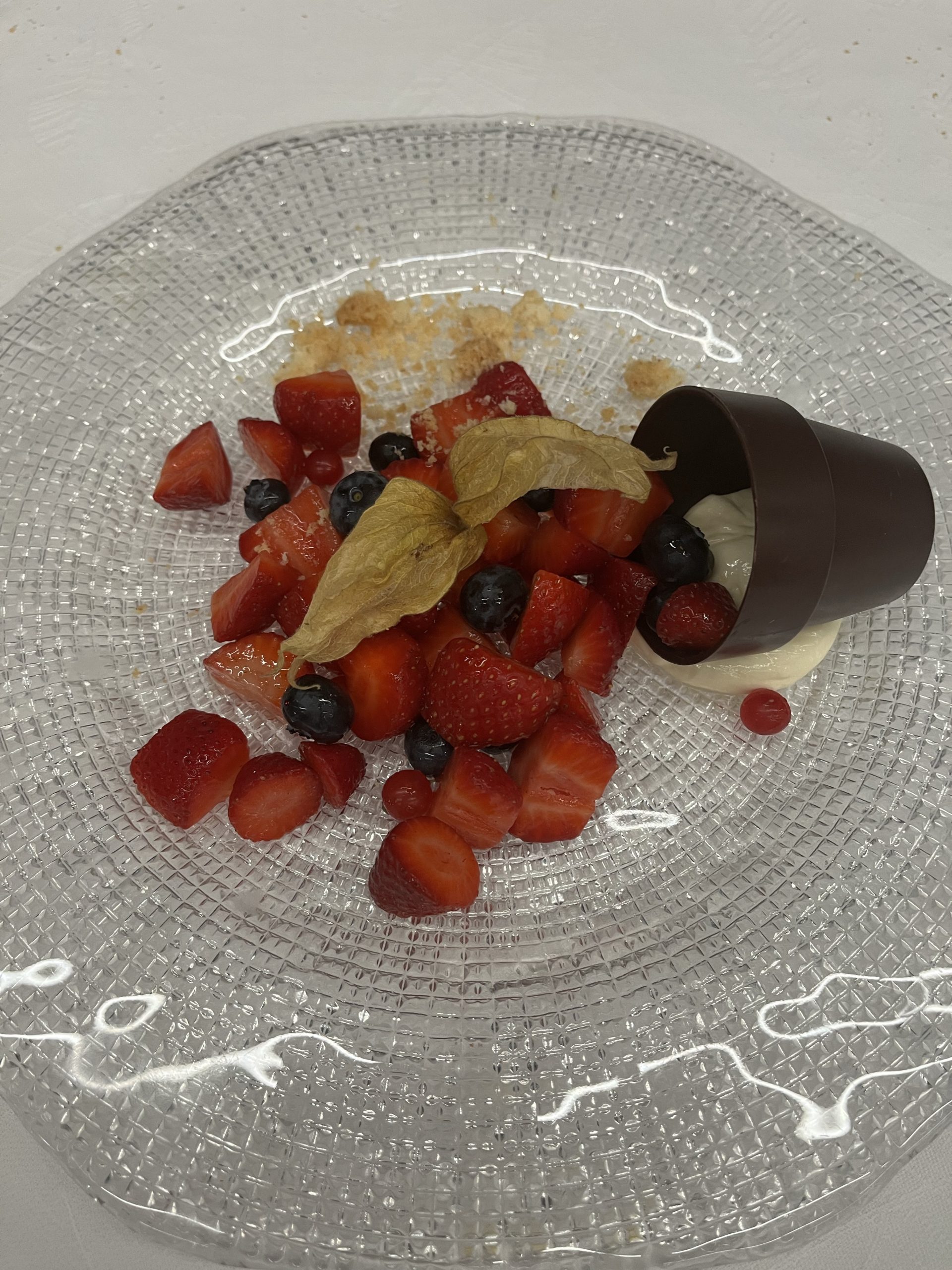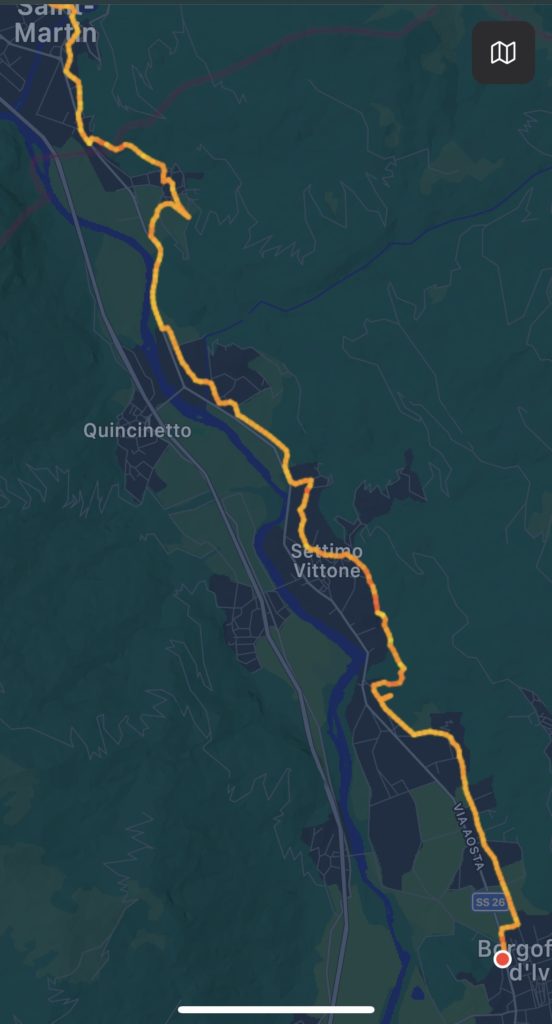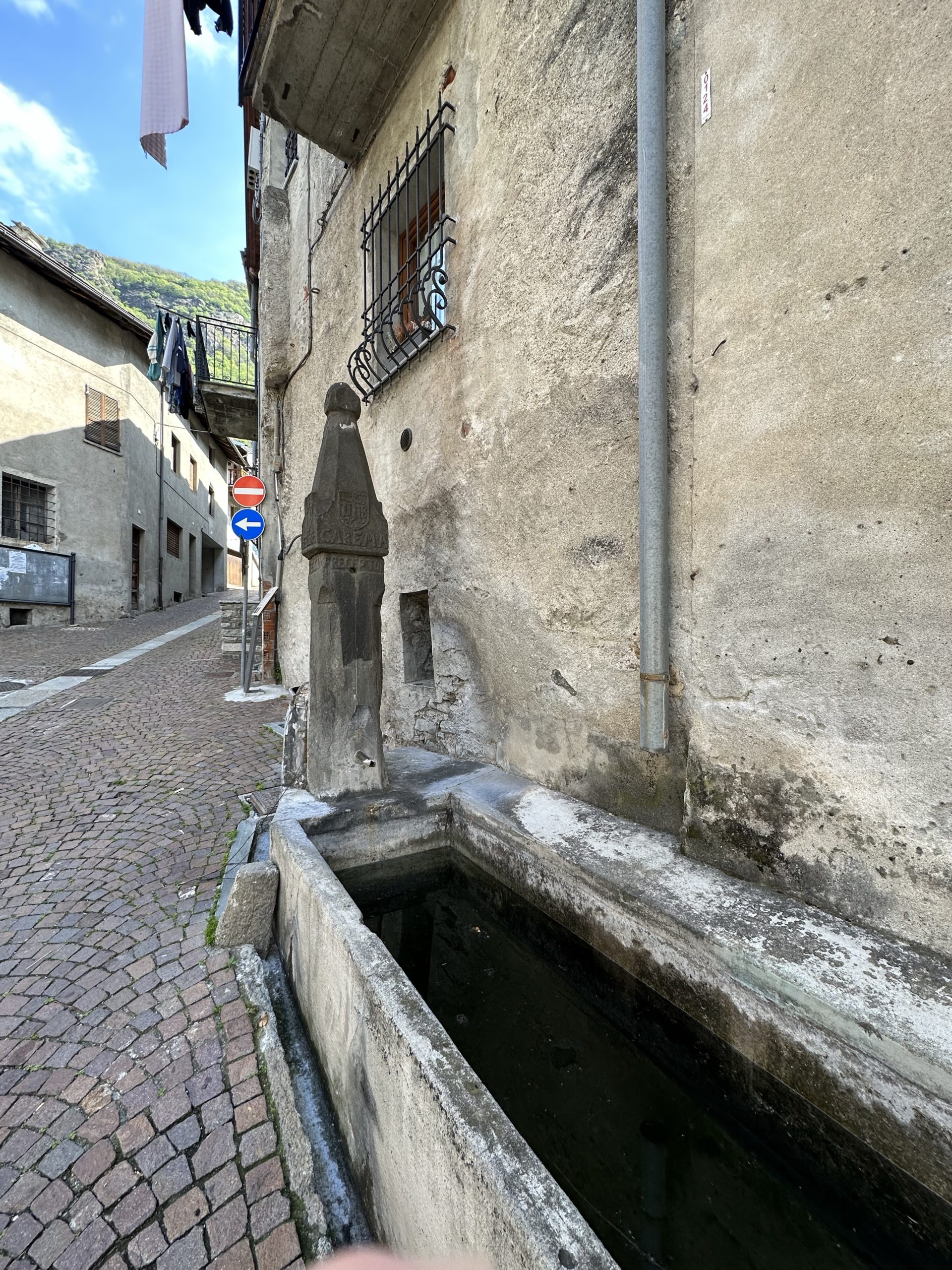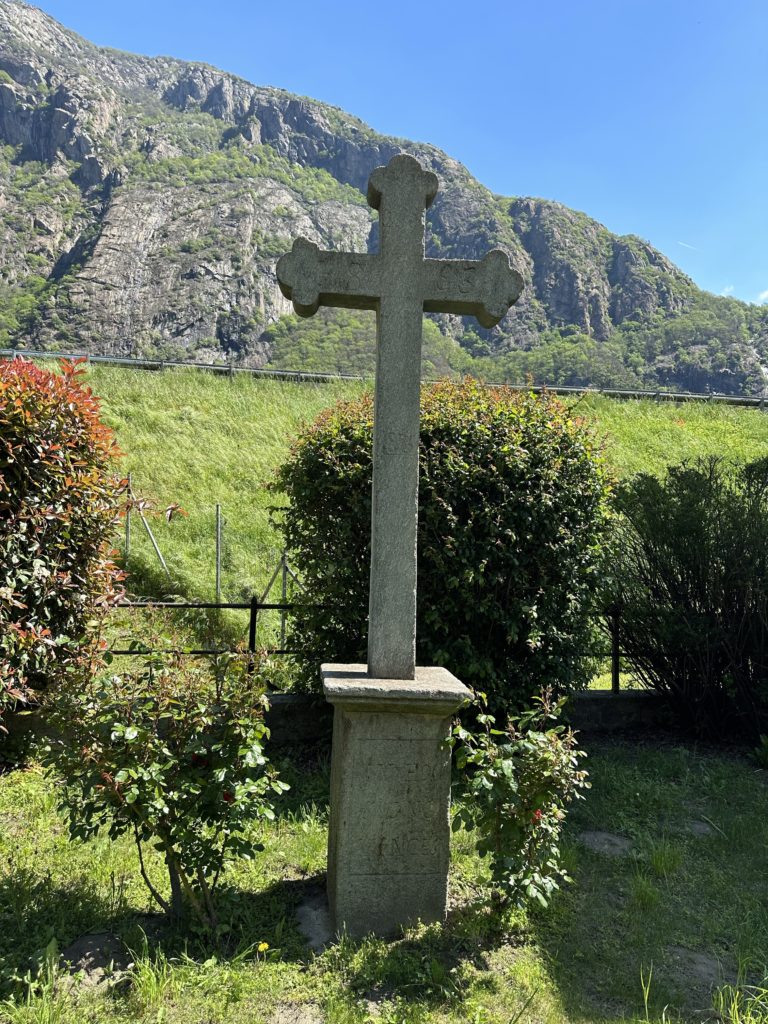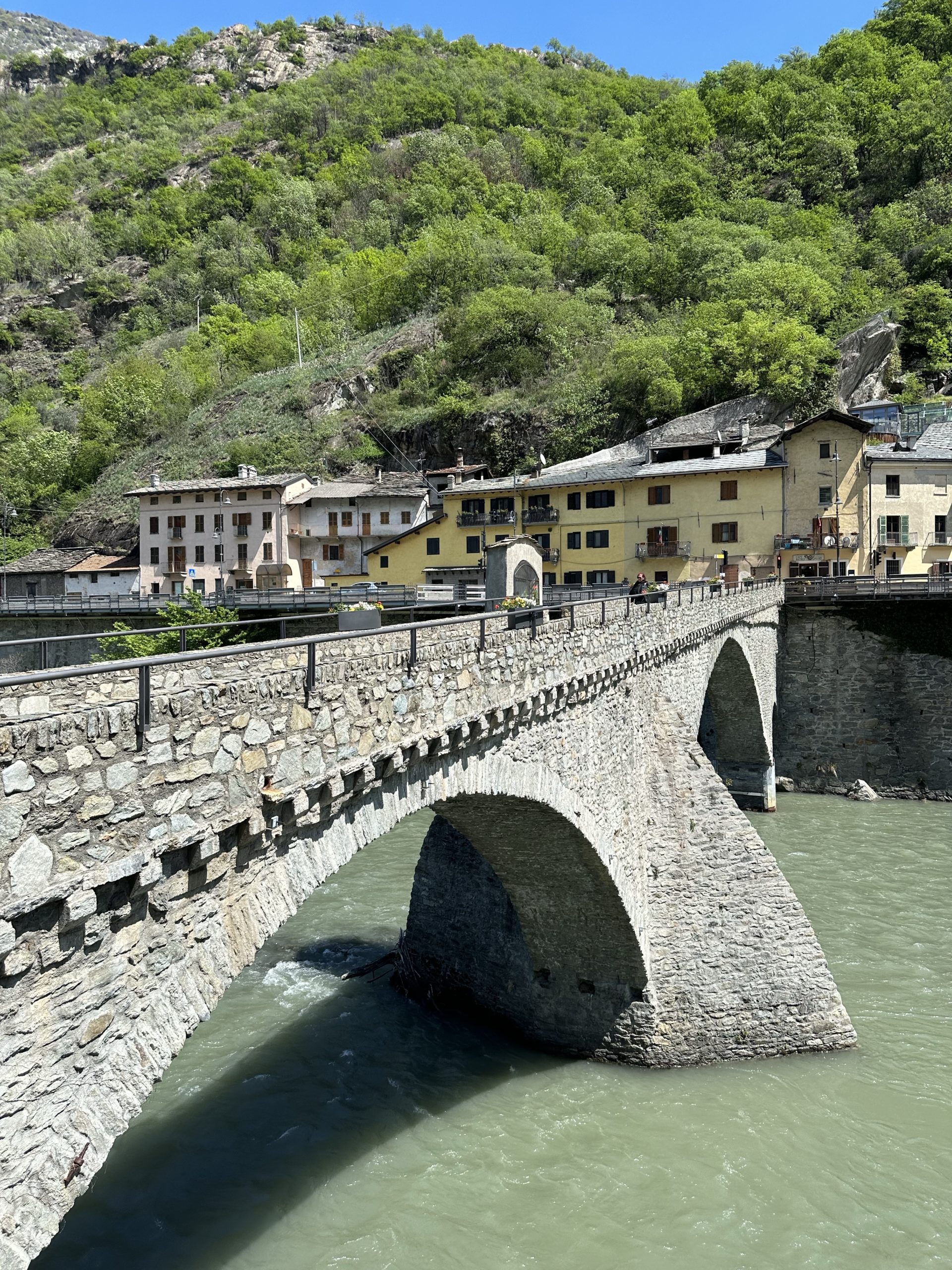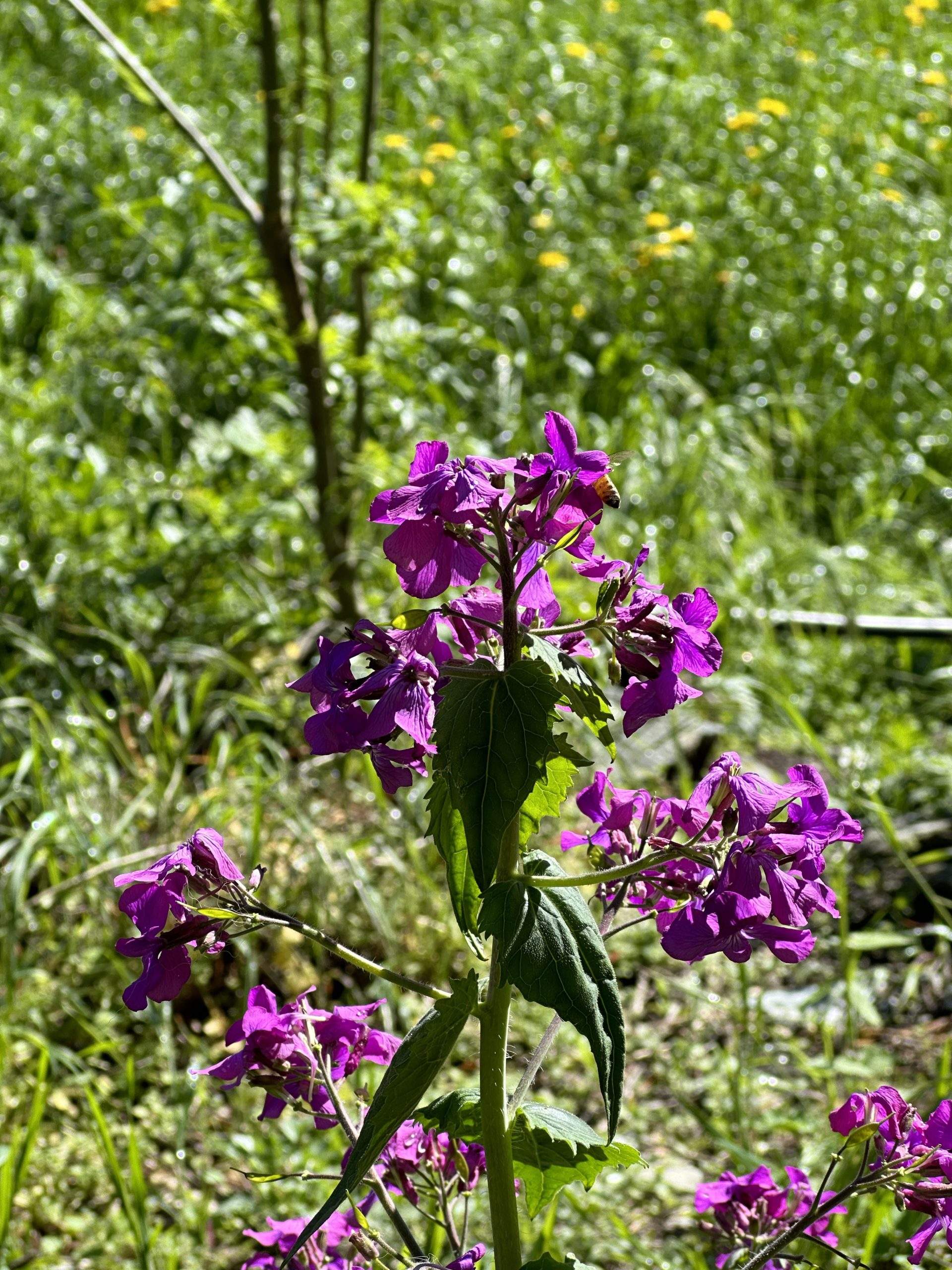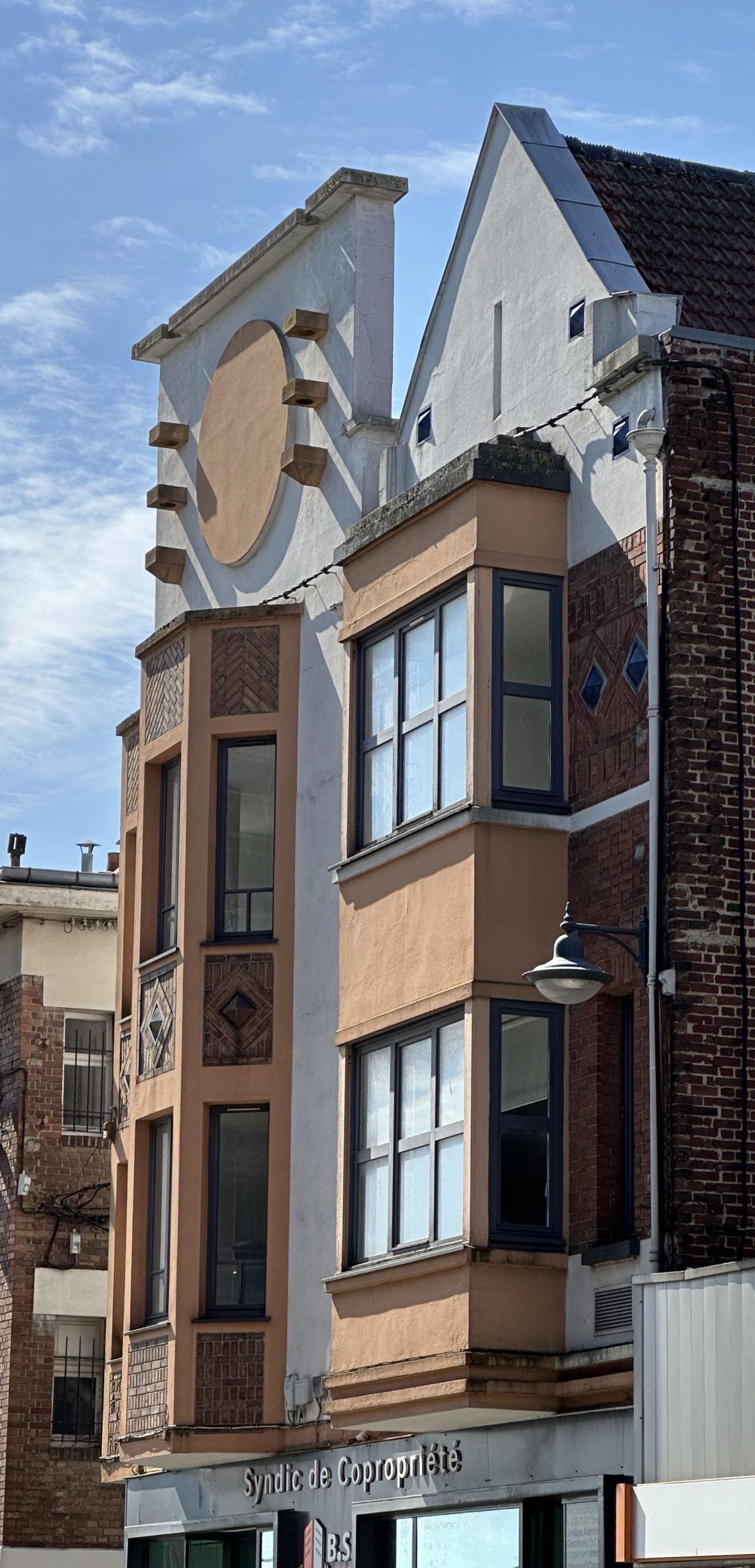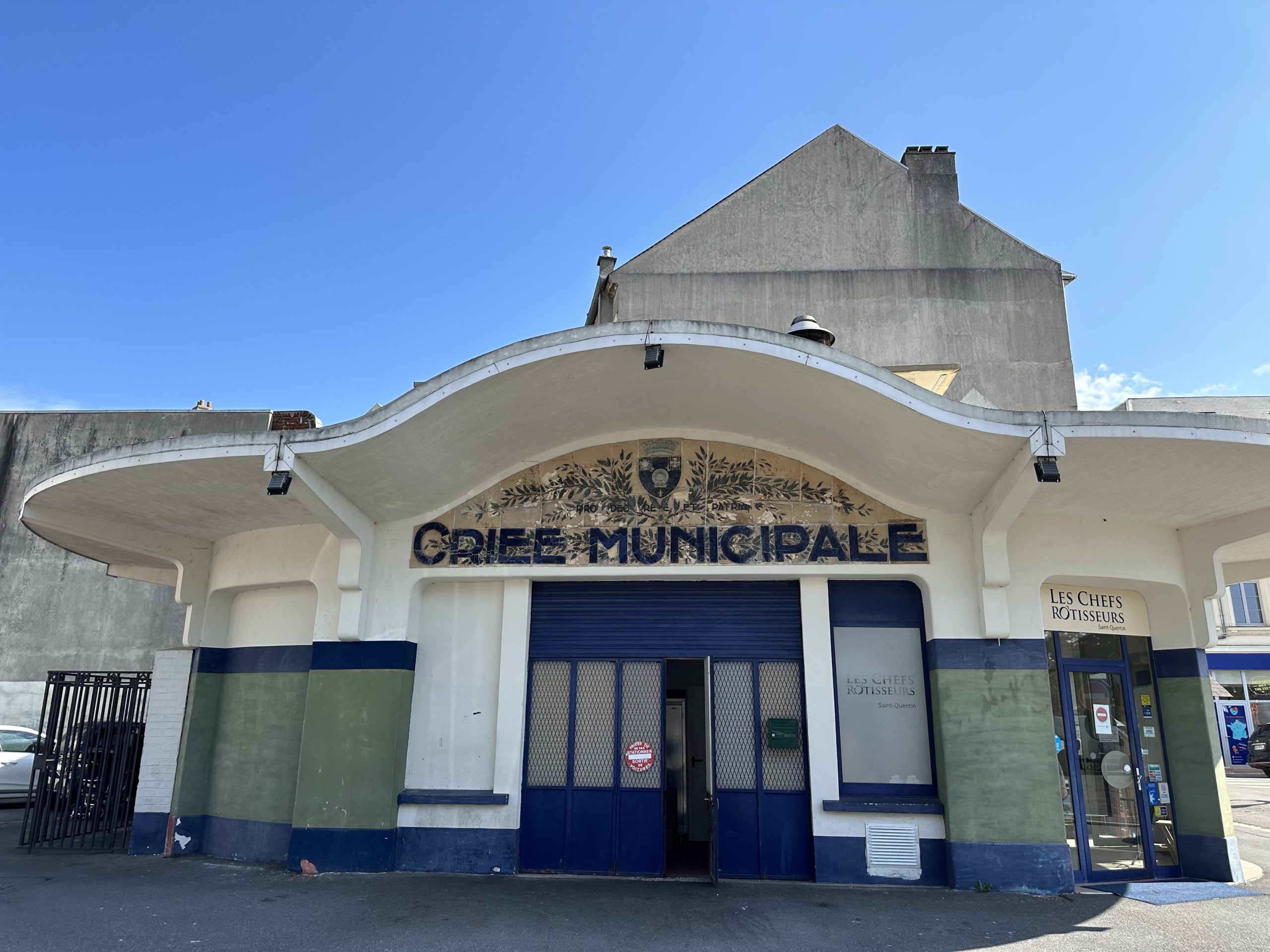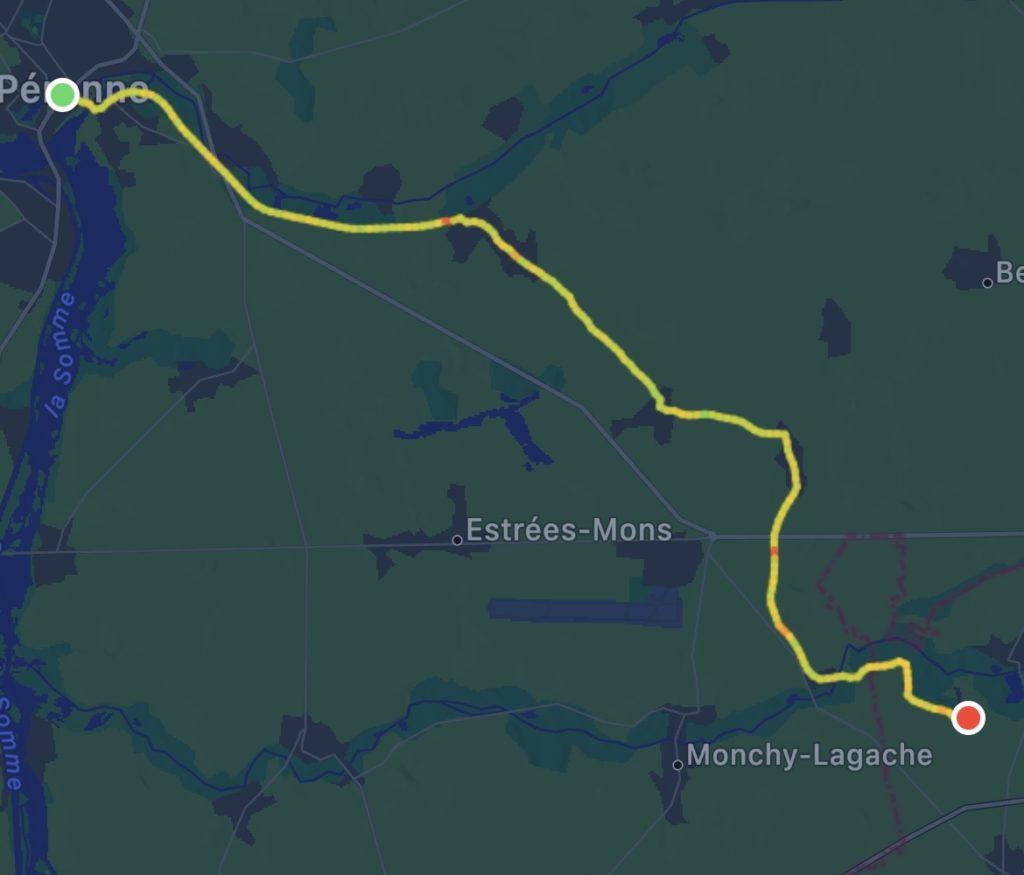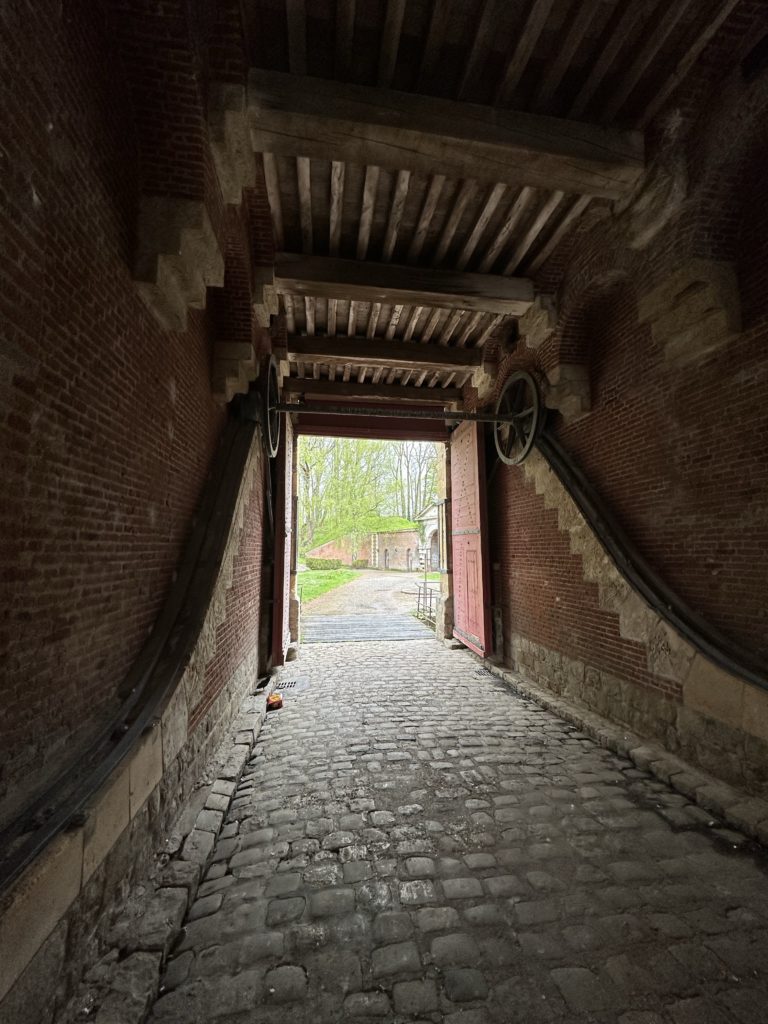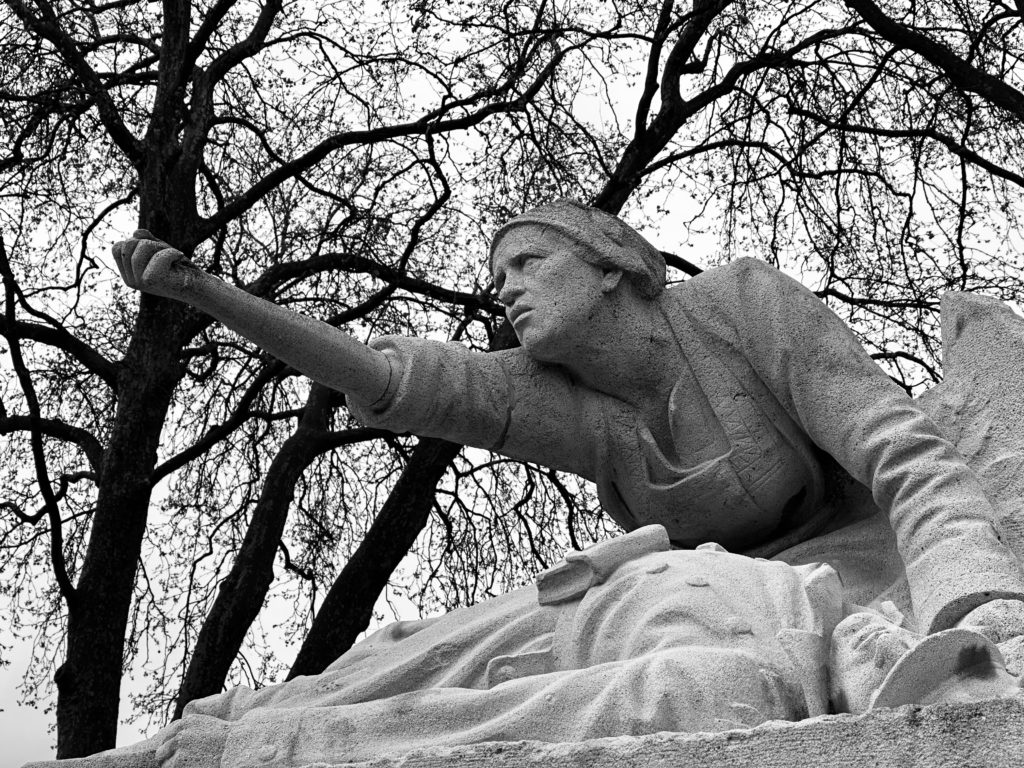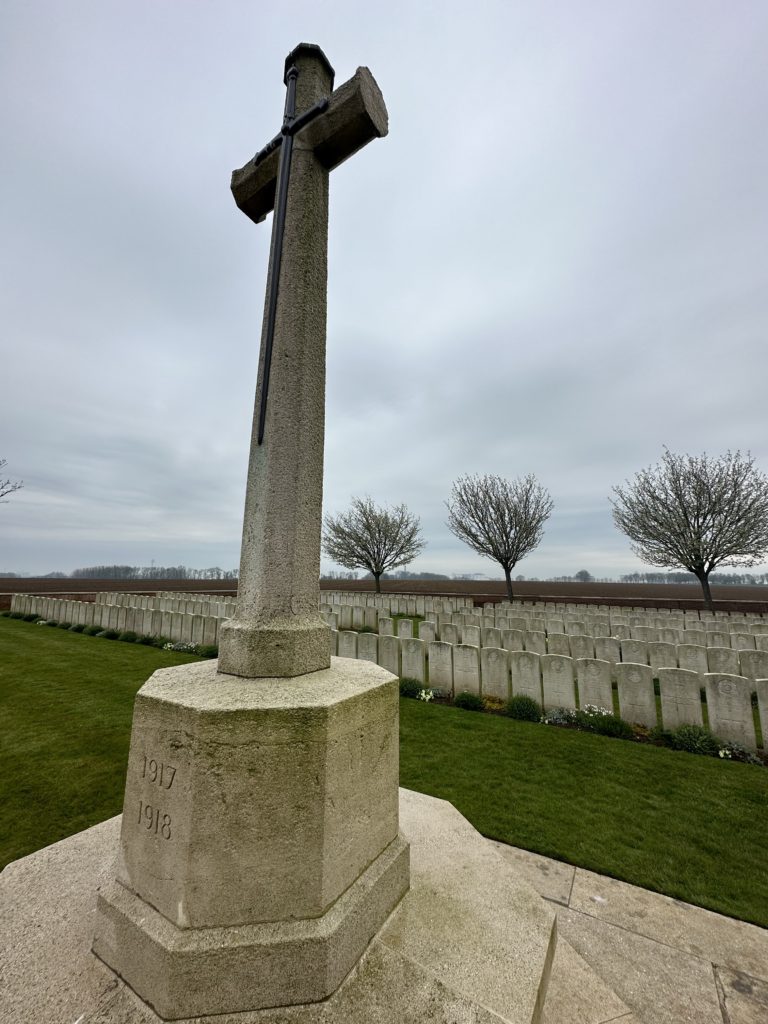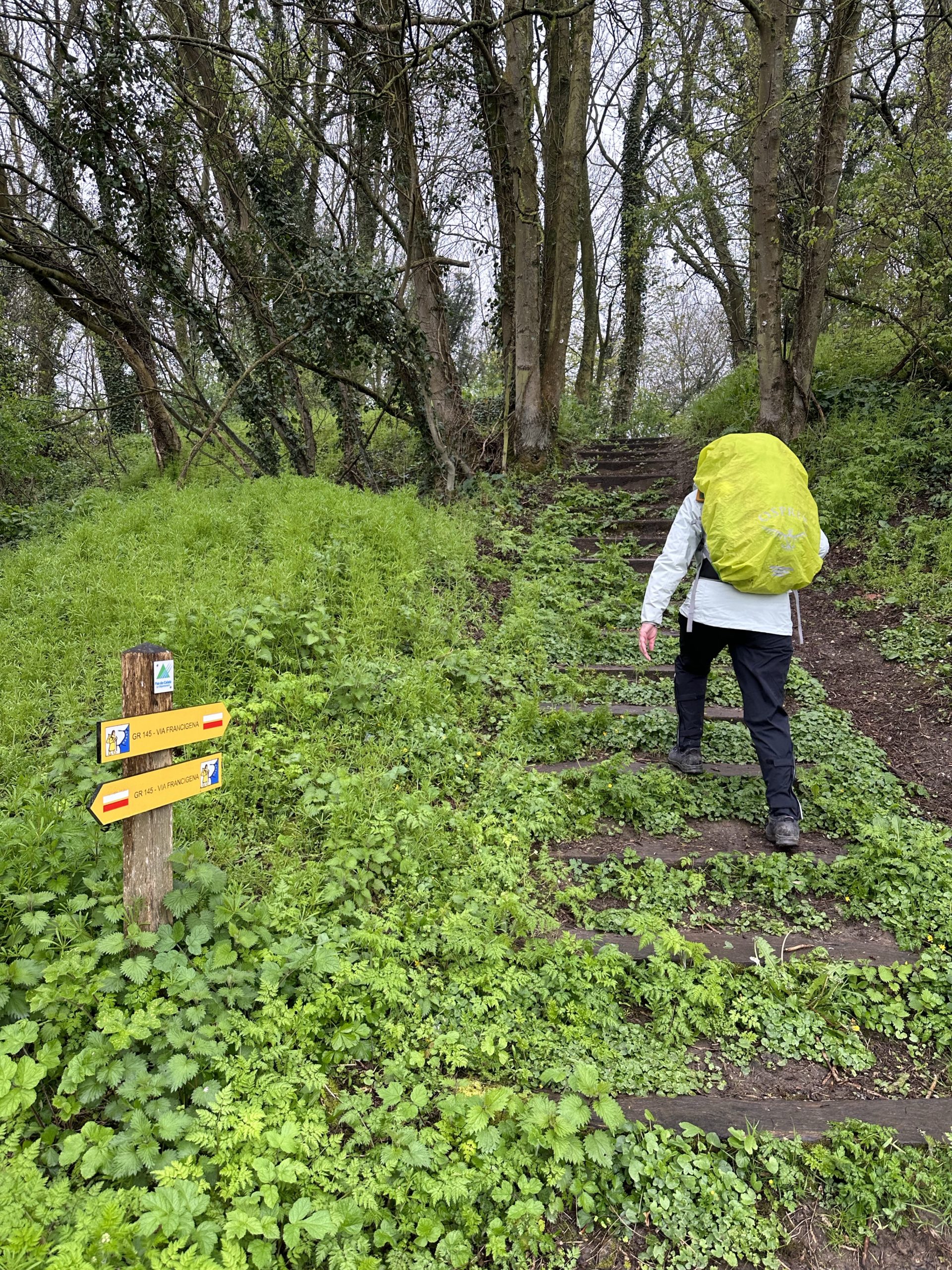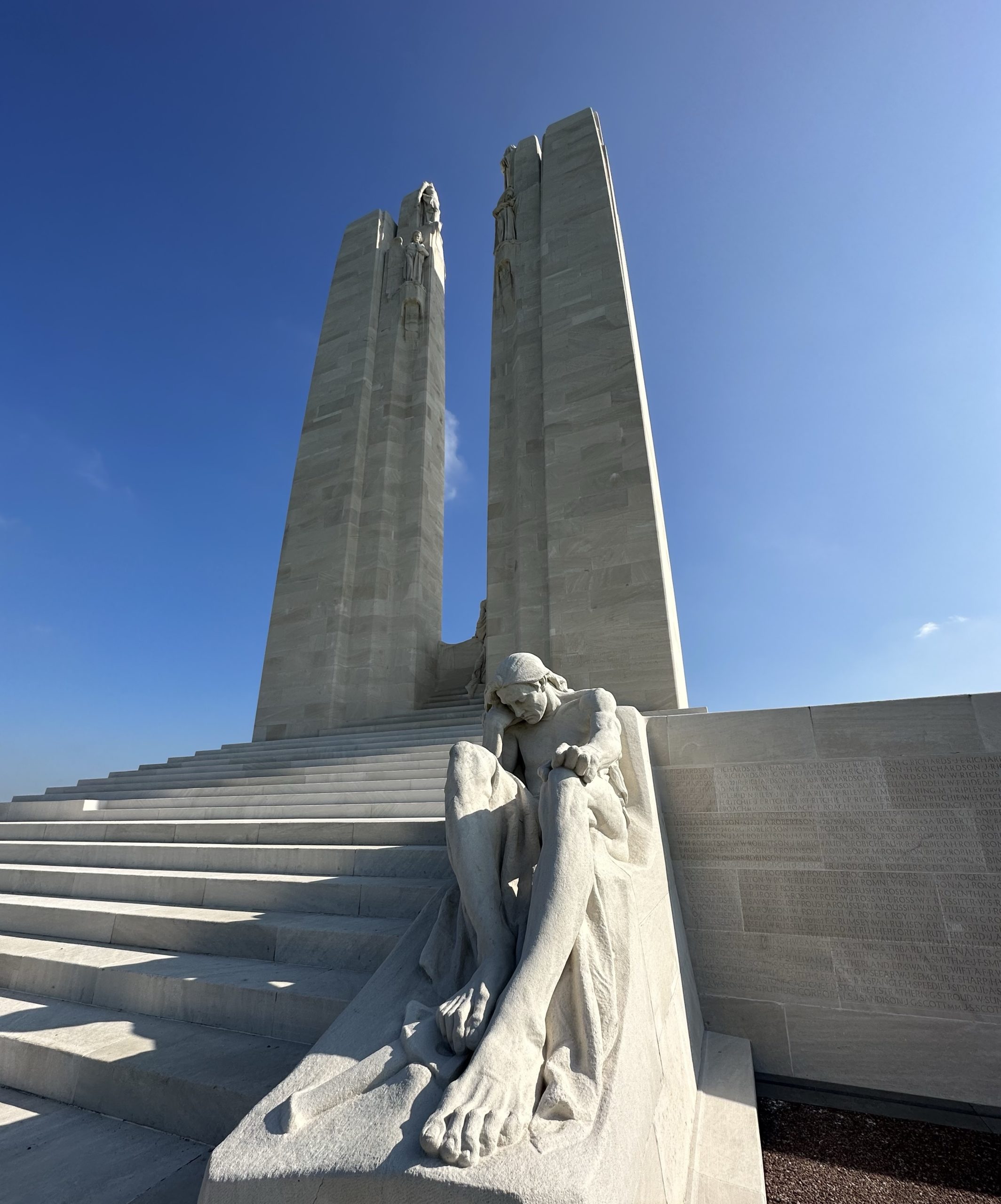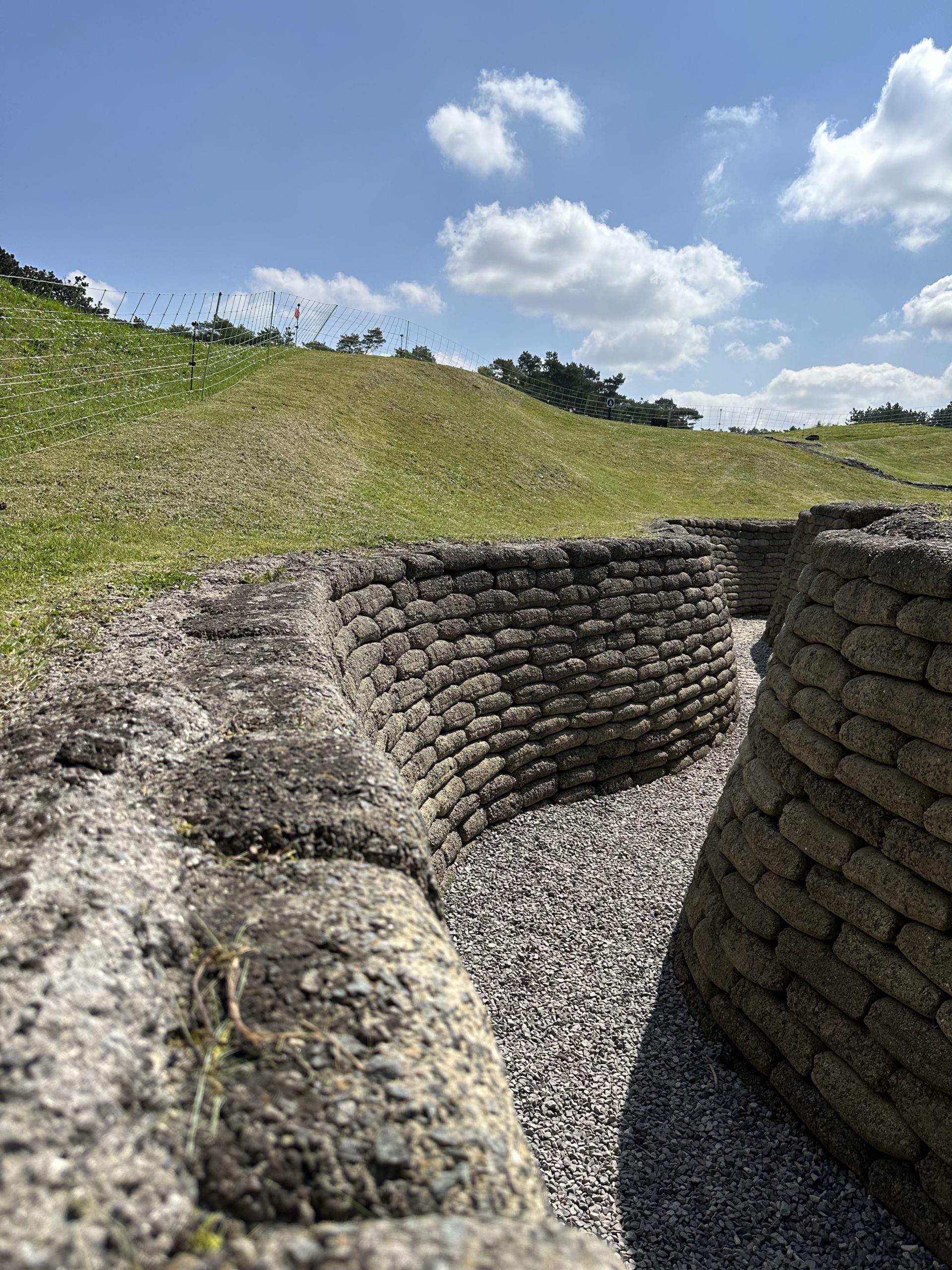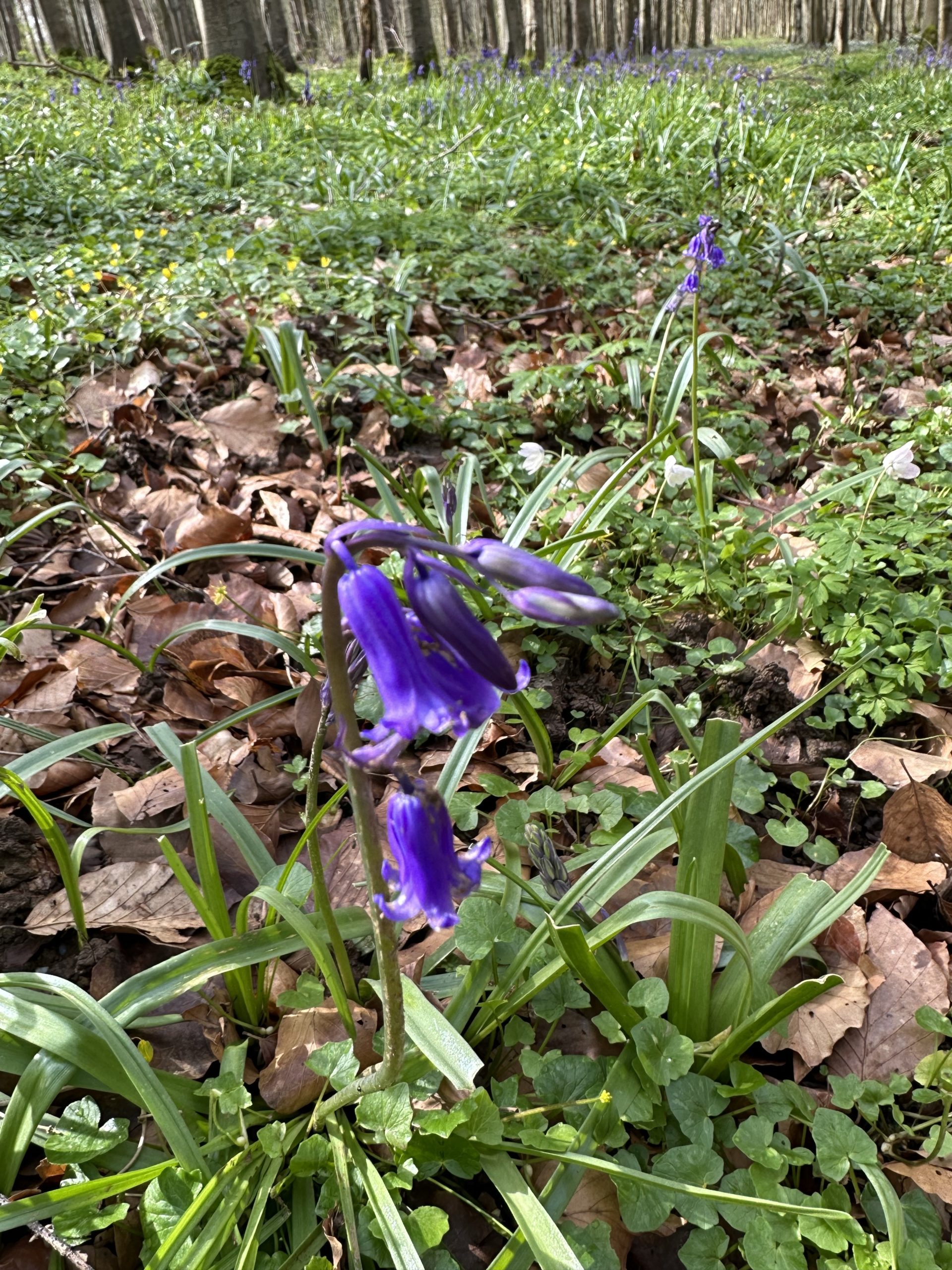
Arriving in Lucca, Lois spent the next couple of days with an intermittent fever which was subsiding by the evening of the 24th. Earlier that day, Paul decided to get a haircut and beard trim at a barber’s shop he had noticed. He wasn’t quite prepared for the 2-hour personal service that involved scissors, straight razors (chosen from a large assortment and sharpened with a strop), and hot and cold towels. A first (and probably last)!
We had time (and energy) to take a short walk along part of the city wall, the entirety of which remains intact, at least from the 16th and 17thC rebuild, and is a great recreational path for walkers and cyclists. We viewed the outside of the Church of San Michele in Foro, with its unique 13thC facade, walked past the 14thC Torre Guinigi with its seven Holm Oak trees planted on the roof, and through the Piazza dell’Amfiteatro. This is in the shape of an oval, built on the remains of a 10,000 seat Roman amphitheater, the walls of which form part of one of the inner rings of houses.
A highlight of Lucca was a concert in the Church of San Giovanni, part of the Puccini Lucca festival, which goes on throughout the year with different themes every night. Saturday night’s theme was a Night at the Opera, a wonderful and spirited performance of arias, duets, and intermezzos from the opera repertoire from Handel to Puccini, given by a mezzo-soprano and tenor, with piano accompaniment. Afterwards, we ate in the Osteria Del Neni, a small rustic place known for classic Tuscan fare. Dessert was Tiramisu, made with Bucelatto, a local cake made with sultanas and flavoured with aniseed. We can also recommend a local roastery, Caffé Ninci, whose brew Paul rates 9/10.


The next morning we headed by train to Cortona, an ancient Tuscan hill town which happens to feature in Frances Mayes’ Under the Tuscan Sun. We were a little worried that it may be overrun with tourists, which it sort of was. However, our hotel was located on a quiet side street and when we went exploring it was less busy away from the main thoroughfare. Just after being served lunch at an outdoor table, a sudden hailstorm caused a mad rush of patrons and waiters grabbing plates and drinks and diving for the nearest table inside!
A long walk up from the town to the Fortezza dell Girifalco provided great views of the town and valley below. The present building dates from the 16thC when it was incorporated into the city walls, but there were fortifications there in the time of the Etruscans. It is being renovated and was hosting art students, so we were not able to see a great deal. Later on in our wanderings, we found a row of medieval houses tucked away under the city wall, clearly still occupied as residences. The main squares were bustling and appeared to be hosting various events, including a wedding. A 9-day Cortona Comics festival was starting just as we were leaving on Saturday. Gastronomically, the highlight was a meal at Sartu, an intimate restaurant down a side street (capacity 18), which included chestnut pasta. On the second evening, we dined on a patio overlooking the plains which stretch towards Lago Transimeno to the south and the Tuscan Hills to the west.

From Cortona, we took a train and funicular to Orvieto for a night. We had last been in Orvieto in November 1997, when we had rented a car in Rome and stopped there on the way to Florence. It was our first experience of an Italian hill town, and remains one of our favourites. At that time, it was quiet in contrast to the throngs of people we now encountered, partly here for « Flowering Orvieto », an annual festival of flowers, in anticipation of the celebration of Pentecost, the Festa della Palombella on May 28. Sketches made of flowers by students of the Art School of Orvieto are displayed in the churches and palaces of the city. This year’s theme is “Current news of Luca Signorelli in the frescoes of the Cathedral of Orvieto: true or false prophets” to celebrate the 500th anniversary of the death of the painter Luca Signorelli, author of the masterpieces that fresco the Chapel of San Brizio in the Cathedral.
Unfortunately, we missed the Festa della Palombella itself. In a celebration dating back to 1404, on the 51st day after Easter, a white dove « takes flight », descending into the Cathedral square. In 1997, we had stayed in a hotel overlooking the remarkable cathedral. It was no less impressive this time.
On the advice of friends, Sharon and Charles, Paul ventured to the bottom of the Well of St. Patrick. This was built in the 1500’s on the orders of the Pope in case the town came under siege. The bore hole is surrounded by a double helix of 248 stone steps descending (and ascending) 53m. Mules were able to carry empty and full water vessels down and up to the top.
Sunday, we took the funicular, train and bus to Viterbo. On Sigeric’s return from Rome, his sixth overnight stop was at the hot springs of Bullicame, just outside the city. Lured by the prospect of restorative waters and the connection with Sigeric, we booked 2 nights at the Hotel Niccolò V, near the Terme dei Papi. The thermal baths include a large, two thousand square metre outdoor swimming pool which is filled with hyperthermal water from the Bullicame spring, at a temperature of 58oC, and an underground natural grotto heated to 48°C by hyperthermal water. Everyone going into the grotto is closely watched and advised to stay a maximum of 10 minutes (we lasted about 3 minutes!), following which you are led to a room with individually screened-off beds where you are wrapped mummy-like in a cotton sheet and plastic and asked to rest for another 10 minutes. In addition to wellness treatments – mud facials, massage, etc. – the spa also offers a range of therapeutic treatments for rheumatic, respiratory, dermatological, ENT, vascular and gynaecological conditions.
While we did not partake of the additional services, we made good use of the monumental thermal pool, the reclining deck chairs and the espresso/apéritive bar. It was a lovely and relaxing way to end our trip. We are in Viterbo tonight and will fly home from Rome airport tomorrow.








